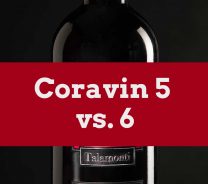Tempranillo vs Pinot Noir: The Untold Similarities, Differences & Selection Criteria
Last Updated on August 1st, 2023
Reader Disclosure Disclosure: We may earn commissions for purchases made through links on our site. Learn more on our about us page.Many believed that Tempranillo and Pinot Noir were related solely based on a monk legend. Studies have proven this wrong, for it was found that they have no connection genetically.
This, however, doesn’t take away from the fact that these two wines both have similarities and differences. Let’s get right into those specifics!
Is Tempranillo The Same As Pinot Noir?
Although believed to be related throughout their lineage, these two wines are not the same and have their differences in origin and grape variety.
What Is Similar About Tempranillo And Pinot Noir?
The similarities between Tempranillo and Pinot Noir are found to be light compared to their differences. Both of these wines are most commonly made to be dry wines, and both share a very similar alcohol content.
In addition, both are red wines, and both Tempranillo and Pinot Noir also have a common base note of cherry.
What Is The Difference Between Tempranillo And Pinot Noir?
You’ll find the differences between these two wines to be stronger than their similarities in origin, grape type, food pairings, and base notes other than cherry, which they share in common.
Tempranillo is a red wine variety created from black wine grapes that are native to Spain. The wine’s notes are considered to be more savory, such as figs, cedar, tobacco, and dill.
Tempranillo complements Mexican cuisine and other foods, including steaks, burgers, lamb, baked pasta, and dishes with corn.
Pinot Noir is also a red wine variety but is produced from red wine grapes originating from France.
The wine includes notes like raspberry and hibiscus, but also mushroom and clove. The dry wine is said to pair best with cuisines that include duck, chicken, pork, and mushrooms.
Which One Is Sweeter Or Drier Than The Other?
Although they are both made to be dry wines, when sampling both, you may find the Pinot Noir to be slightly less dry than the Tempranillo.
This is because of Pinot Noir’s notes of raspberry and hibiscus compared to Tempranillo’s more savory notes of cedar, dill, and tobacco.
Which One Has More Alcohol Content?
The alcohol content between these two is found to line up almost perfectly. However, depending on the climate of the region the wine was made in, this can change drastically.
Tempranillo tends to carry an average of 13.5-15% alcohol by volume, while the Pinot Noir will carry an average anywhere between 12-15% alcohol by volume.
If the Pinot Noir is made in a region with cooler climates, you’ll find the wine to hold a lower percentage of alcohol content. This will change if the wine is made in a region with a warmer climate.
How Do I Choose Between Tempranillo And Pinot Noir?
If you prefer dry red wines that have notes of cherry, fig, cedar, and tobacco, you might prefer Tempranillo. If you are serving any sort of Mexican cuisine and need a wine to pair with it, Tempranillo should always be your first option.
However, if you’re into those dry red wines that steer towards notes of raspberry and hibiscus – but also pull off notes of mushroom and clove, then you’d prefer a Pinot Noir over a Tempranillo.
Likewise, if you are serving a meal with pork and mushrooms and need red wine to pair with it – Pinot Noir would be your choice.
Final Thoughts On Tempranillo And Pinot Noir
Although believed to be related, Tempranillo and Pinot Noir are not the same. However, aside from their differences in origin and grape type, they do have similarities in notes and style.
Although Tempranillo is said to carry more alcohol content overall, it’s the Pinot Noir that is considered to be slightly sweeter in taste compared to Tempranillo.


















